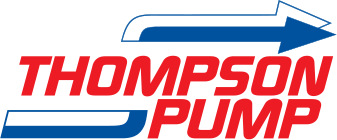Liberty West Interceptor Sewer
When the interceptor sewer line leading to the Liberty West Treatment Plant in Kansas City, MO, was in need of repair, contractor Havens Construction Company called Thompson Pump’s Kansas City Branch for help. The 60-inch diameter interceptor was the one of the main lines that leads to the plant that other, smaller sewer lines fed into.
Thompson was called because of previous experience Haves had with the Thompson Pump representative, and they knew that whatever pumps were recommended to bypass the sewer line break would be able to handle the job at a reasonable cost.
That turned out to be exactly the case, as three Thompson 12-inch High Pressure Solids Handling Pumps were quickly put on site. One pump was for primary pumping of the 60-inch line, which had normal flows of 4-million gallons per day (MGD). The second pump, which included an automatic start and stop control panel with float system for automatic controlled operation, was to handle peak flows, which had been flowing at 8-mgd. The third pump, which also included an automatic start and stop control panel with float system, was for back up pumping in case flows reached higher levels. Each of the pumps were equipped with Thompson Pump’s exclusive ENVIROPRIME® Priming System, which have been proven a valuable addition to any bypass application. By design, the ENVIROPRME I ® Priming System prevents the pumping effluent, in this case, sewage, from escaping from the priming system causing an environmental concern. It also is able to prime and re-prime quickly, even in “snore” conditions (when a pump’s suction strainer is no longer submersed in the water and pulling in air).
Each of the pump’s discharge fed into a common manifold and were then directed 300’ away using 18” High-Density Polyethylene (HDPE) Pipe into another 120’ interceptor. Thompson Pump provided the pumps, HDPE pipe, connectors and elbows, the manifold and everything else needed to complete the system, and Thompson Pump representatives were available to assist with the system installation.
Once the pumps were secure and operating, it allowed investigations to begin to determine the cause of the break.
